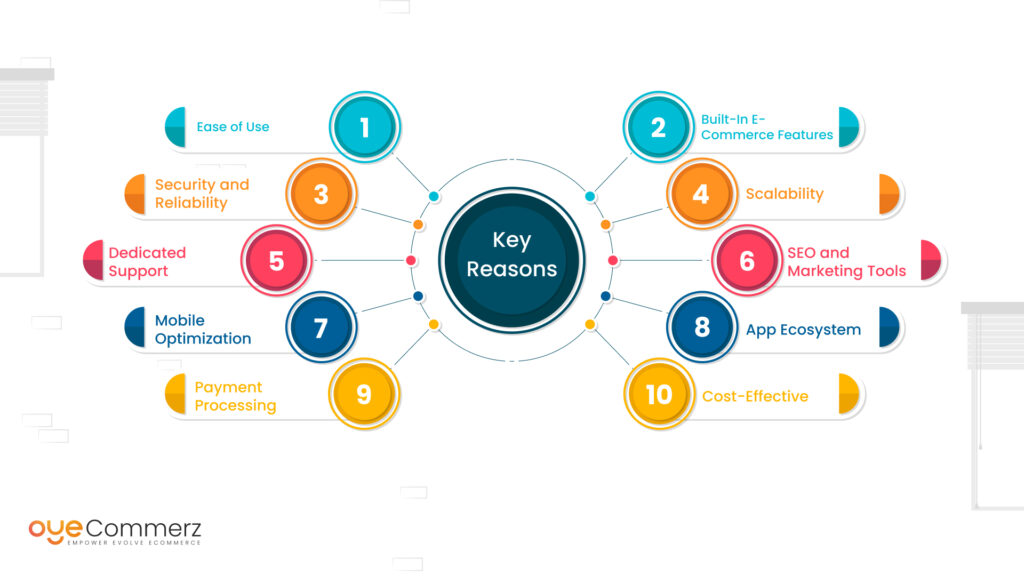Shifting from WP to Shopify is an exciting step in optimizing your online store operations. As companies expand, choosing a solution that supports scalability, UX, and customization is essential. Shopify has emerged as a preferred choice for e-commerce professionals, offering superior flexibility, data protection, and ease of use. In this guide, we’ll explore the transformative impact of this migration, discuss the advantages, and provide practical tips to ensure a smooth transition.
1. Why Switch from WordPress to Shopify?
WordPress, paired with WooCommerce, continues to support countless online stores. Nevertheless, as businesses scale, challenges like reliance on plugins, security vulnerabilities, and complex setups can hinder growth. Shopify, specifically created for e-commerce, eliminates these issues with an comprehensive, intuitive platform. Real data supports this shift—Shopify hosts over 4.4 million websites globally, with a reported 10% increase in sales conversion rates for numerous merchants post-switch.
2. Key Benefits of Shopify for E-commerce Success
Shopify’s powerful platform caters for expanding businesses. Its notable features include:
- Effortless Design Flexibility: Shopify offers over 80 professionally designed themes.
- Built-in Features: Capabilities such as Shopify Payments and integrated SEO save time and effort.
- Global Reach: Currency versatility and regional customization empower brands to expand internationally.
Additionally, Shopify delivers an uptime rate of 99.98%, guaranteeing your store is always operational.
3. Preparing for WP to Shopify Migration
Prior to starting the migration process, assess your existing setup. Analyze inventory details, customer details, and SEO performance. Resources such as Shopify’s Migration Kit or third-party solutions help ease the transition. Develop a comprehensive plan, making sure all resources—item details, media files, and blog content—are optimized for transfer.
4. The Importance of Shopify for small businesses Accurate Data Migration
Data migration forms the foundation for a successful platform switch. When moving from WordPress to Shopify, prioritize:
- Inventory Details: SKU, descriptions, and categories.
- Client Information: Emails, purchase records, and custom fields.
- SEO Optimization: Preserve meta tags, URLs, and redirects to maintain search rankings.
Leverage apps like LitExtension to streamline data transfer while reducing mistakes.
5. Tailoring Your Shopify Store to Fit Your Brand
After the move, customizing your Shopify store ensures it aligns with your business identity. Utilize Shopify’s drag-and-drop editor to design pages effortlessly. Shopify's themes are mobile-responsive, ensuring a smooth user experience across devices—a critical factor, given 74% of e-commerce traffic comes from mobile users.
6. How to Protect Your SEO Rankings When Switching Platforms
Search engine optimization is crucial for maintaining your visibility during migration. Shopify is highly optimized for search engines with organized link formatting, built-in optimization tools, and seamless blog integration. Ensure:
- Implement 301 redirects for old Shopify post-migration support URLs.
- Enhance updated content with keyword-rich content.
- Use Shopify's apps Plug in SEO to track analytics post-migration.
7. Essential Tests After Migrating to Shopify
After finishing the transfer, run detailed checks.
Check: - Website speed (Shopify boasts faster speeds in contrast with WordPress).
- Payment integration reliability and checkout processes.
- Mobile responsiveness.
Testing guarantees your store provides a seamless shopping journey from day one.
8. Case Study of a Successful Migration
One such migration success story is Gymshark, a sportswear company that transitioned to Shopify. After the switch, the company experienced a 60% boost in mobile sales and reduced site downtime. This highlights the potential of Shopify in enhancing e-commerce growth.
9. Overcoming Common Migration Issues
Migration comes with challenges, such as data integrity and adjusting tailored features. However, Shopify’s robust support and external professionals make overcoming these hurdles manageable. Collaborating with experienced Shopify developers helps guarantee a smooth transition.
10. Starting Your Journey with Shopify
Switching from WordPress to Shopify represents a strategic approach to e-commerce. By focusing on growth, simplifying management, and enhancing the customer experience, Shopify enables companies to succeed in competitive markets.
Conclusion
Transitioning from WP to Shopify is a strategic move that can significantly boost your online business performance. With a well-structured strategy, the right tools, and professional guidance, you can achieve new growth opportunities.
Excited to start the journey? Let’s discuss how our Shopify migration services can transform your e-commerce platform. Contact us now, or ask yourself: Is it time to seize Shopify’s advantages for your store?
